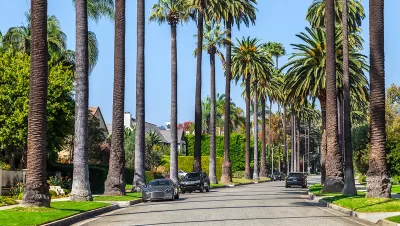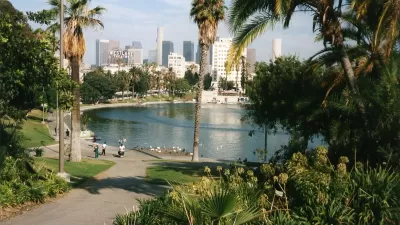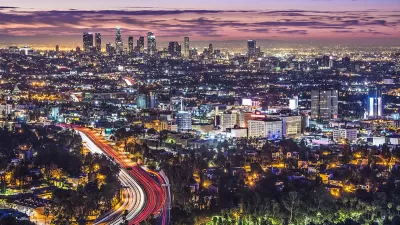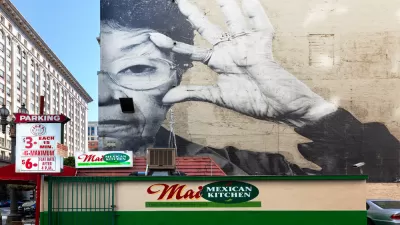Councilmember José Huizar weighs the city's new rules against those proposed by the upcoming ballot measure.

Los Angeles Councilmember José Huizar, who chairs the Planning and Land Use Committee, is behind the city's new framework to update its 35 community plans every six years. In The Planning Report, he explains how the move was spurred by the fierce debate over the upcoming Measure S, and how the city's reform program—although it has not yet secured a source of funding—serves to "rebuke" the points behind the March 7 ballot measure.
While taking up a central premise of the measure—that the city's general and community plans must be updated—Huizar believes the proposal's temporary moratorium on plan exemptions would be detrimental to economic development and job creation.
"The good thing about Measure S is that it brought light to the city’s need to update its community plans ... The bad thing about Measure S is the two-year moratorium. Not only will it slow down development and growth in our Downtown area, but it will not allow us to manage that growth over two years. Passing Measure S will bring more chaos to the system it wants to fix."
Huizar also describes the "astronomical" growth of investment in Downtown, which is part of his district, and his plans to make the area friendlier to families, pedestrians, and the entertainment industry.
Downtown’s own community plan is being updated right now; the DTLA2040 Community Plan Update is coupled with the pilot of recode.LA, the effort to update and simplify the zoning code citywide.
FULL STORY: José Huizar On Downtown Building & City Council Vote To Reform Planning In Shadow Of Measure S Vote

Study: Maui’s Plan to Convert Vacation Rentals to Long-Term Housing Could Cause Nearly $1 Billion Economic Loss
The plan would reduce visitor accommodation by 25,% resulting in 1,900 jobs lost.

North Texas Transit Leaders Tout Benefits of TOD for Growing Region
At a summit focused on transit-oriented development, policymakers discussed how North Texas’ expanded light rail system can serve as a tool for economic growth.

Using Old Oil and Gas Wells for Green Energy Storage
Penn State researchers have found that repurposing abandoned oil and gas wells for geothermal-assisted compressed-air energy storage can boost efficiency, reduce environmental risks, and support clean energy and job transitions.

Private Donations Propel Early Restoration of Palisades Playground
Los Angeles has secured over $1.3 million in private funding to restore the Pacific Palisades playground months ahead of schedule, creating a modern, accessible space that supports community healing after recent wildfires.

From Blight to Benefit: Early Results From California’s Equitable Cleanup Program
The Equitable Community Revitalization Grant (ECRG) program is reshaping brownfield redevelopment by prioritizing projects in low-income and environmental justice communities, emphasizing equity, transparency, and community benefits.

Planting Relief: Tackling Las Vegas Heat One Tree at a Time
Nevada Plants, a Las Vegas-based nonprofit, is combating the city’s extreme urban heat by giving away trees to residents in underserved neighborhoods, promoting shade, sustainability, and community health.
Urban Design for Planners 1: Software Tools
This six-course series explores essential urban design concepts using open source software and equips planners with the tools they need to participate fully in the urban design process.
Planning for Universal Design
Learn the tools for implementing Universal Design in planning regulations.
Ascent Environmental
Borough of Carlisle
Institute for Housing and Urban Development Studies (IHS)
City of Grandview
Harvard GSD Executive Education
Toledo-Lucas County Plan Commissions
Salt Lake City
NYU Wagner Graduate School of Public Service





























